Android的文件存储方式分为两种:内部存储和外部存储。 1) 内部存储 内部存储是指将应用程序的数据以文件方式存储到设备内存中。以内部存储方式存储的文件属于其所创建的……
1) 内部存储
内部存储是指将应用程序的数据以文件方式存储到设备内存中。以内部存储方式存储的文件属于其所创建的应用程序私有,其他应用程序无权进行操作。
当创建的应用程序被卸载时,其内部存储的文件也随之被删除。当内部存储器的存储空间不足时,缓存文件可能会被删除以释放空间。
因此,缓存文件是不可靠的。当使用缓存文件时,自己应该维护好缓存文件,并且将缓存文件限制在特定大小之内。
使用文件存储信息时,使用 openFileOutput 和 openFileInput 进行文件的读写,这跟 Java 中的 I/O 程序很类似。创建并写内部存储文件的步骤如下:
1)通过 Context.openFileOutput(String name, int mode) 方法打开文件并设定读写方式,返回 FileOutputStream。
其中,参数 mode 取值为:
-
MODE_PRIVATE:默认访问方式,文件仅能被创建应用程序访问。
-
MODE_APPEND:若文件已经存在,则在文件末尾继续写入数据,而不抹掉文件原有内容。
-
MODE_WORLD_READABLE:允许该文件被其他应用程序执行读取内容操作。
-
MODE_WORLD_WRITEABLE:允许该文件被其他应用程序执行写操作。
2) 调用 FileOutputStream.write() 方法写入数据。
3) 调用 FileOutputStream.close() 方法关闭输出流,完成写操作。
内部存储文件的写文件示例代码如下:
-
String FILENAME="hello_file";
-
String string="hello world";
-
FileOutputStream fos = openFileOutput(FILENAME,Context.MODE_PRIVATE);
-
fos.write(string.getBytes());
-
fos.close();
2) 外部存储
外部存储是指将文件存储到一些外部存储设备上。例如 SD 卡或者设备内嵌的存储卡,属于永久性的存储方式。
外部存储的文件不被某个应用程序所特有,可以被其他应用程序共享,当将该外部存储设备连接到计算机上时,这些文件可以被浏览、修改和删除。因此,这种存储方式不具有安全性。
由于外部存储器可能处于被移除、连接到计算机、丢失、只读或者其他各种状态,因此在使用外部存储之前,必须使用 Environment.getExternalStorageState() 方法来确认外部存储器是否可用。
验证外部存储器是否可读写的代码如下:
-
boolean mExternalStorageAvailable=false;
-
boolean mExternalStorageWriteable=false;
-
String state = Environment.getExternalStorageState();
-
if(Environment.MEDIA_MOUNTED.equals(state)){
-
//外部存储器可读写
-
mExternalStorageAvailable = mExternalStorageWriteable = true;
-
}else if(Environment.MEDIA_MOUNTED_READ_ONLY.equals(state)){
-
//外部存储器可读不可写
-
mExternalStorageAvailable=true;
-
mExternalStorageWriteable=false;
-
}else{
-
//外部存储器不可读写,处于其他状态
-
mExternalStorageAvailable = mExternalStorageWriteable = false;
-
}
此外,在程序开发过程中还可以使用缓存文件(Cache),内部存储和外部存储都可以用于保存缓存文件。
如上述一样,当存储器的存储空间不足时,缓存文件可能会被删除以释放空间。因此,缓存文件是不可靠的。当使用缓存文件时,应该自己维护好缓存文件,并且将缓存文件限制在特定大小之内。
使用文件存储功能
实例 FileDemo 演示了使用文件存储的功能,其运行效果如图 1 所示。
图 1 FileDemo运行结果
该实例将文本框中输入的内容存储到名为 text 的文件中。当该应用程序再次启动时,可以从 text 文件写入的内容中读取并显示出来。
本实例使用内部存储方式,我们可以在 data/data/<your package name>/files 目录下找到名为 text 的文件。
本实例没有将文件放置到 SD卡 中,可自行实现将文件保存在 SD 卡中的操作。
实例 FileDemo 的布局文件 main.xml 中放置了两个 TextView、一个 EditText 和两个 Button,其代码如下:
-
<?xml version="1.0" encoding="utf-8"?>
-
<LinearLayout xmlns:android="http://schemas.android.com/apk/res/android"
-
android:layout_width="fill_parent"
-
android:layout_height="fill_parent"
-
android:orientation="vertical">
-
<TextView
-
android:layout_width="fill_parent"
-
android:layout_height="wrap_content"
-
android:text="使用文件存储程序信息" />
-
<TextView
-
android:layout_width="fill_parent"
-
android:layout_height="wrap_content"
-
android:text="输出您存入的信息" />
-
<EditText
-
android:id="@+id/phone_text"
-
android:layout_width="fill_parent"
-
android:layout_height="wrap_content"
-
android:hint="输入保存的信息" />
-
<LinearLayout
-
android:layout_width="wrap_content"
-
android:layout_height="wrap_content"
-
android:orientation="vertical">
-
<Button
-
android:id="@+id/SaveButton"
-
android:layout_width="wrap_content"
-
android:layout_height="wrap_content"
-
android:text="保存信息" />
-
<Button
-
android:id="@+id/LoadButton"
-
android:layout_width="wrap_content"
-
android:layout_height="wrap_content"
-
android:text="读取信息" />
-
</LinearLayout>
-
</LinearLayout>
实例 FileDemo 中 AndroidManifest.xml 文件的代码如下:
-
<?xml version="1.0" encoding="utf-8"?>
-
<manifest xmlns:android="http://schemas.android.com/apk/res/android"
-
package="introduction.android.fileDemo"
-
android:versionCode="1"
-
android:versionName="1.0">
-
<uses-sdk android:minSdkVersion="14" />
-
<application
-
android:allowBackup="true"
-
android:icon="@mipmap/ic_launcher"
-
android:label="@string/app_name"
-
android:roundIcon="@mipmap/ic_launcher_round"
-
android:supportsRtl="true"
-
android:theme="@style/AppTheme">
-
<activity android:name=".MainActivity">
-
<intent-filter>
-
<action android:name="android.intent.action.MAIN" />
-
<category android:name="android.intent.category.LAUNCHER" />
-
</intent-filter>
-
</activity>
-
</application>
-
</manifest>
实例 FileDemo 中 MainActivity.java 的代码如下:
-
import android.app.Activity;
-
import android.os.Bundle;
-
import android.view.View;
-
import android.widget.Button;
-
import android.widget.EditText;
-
import android.widget.Toast;
-
import java.io.FileInputStream;
-
import java.io.FileOutputStream;
-
public class MainActivity extends Activity {
-
private EditText SaveText;
-
private Button SaveButton, LoadButton;
-
@Override
-
public void onCreate(Bundle savedInstanceState) {
-
super.onCreate(savedInstanceState);
-
setContentView(R.layout.activity_main);
-
SaveText = (EditText) findViewById(R.id.phone_text);
-
SaveButton = (Button) findViewById(R.id.SaveButton);
-
LoadButton = (Button) findViewById(R.id.LoadButton);
-
SaveButton.setOnClickListener(new ButtonListener());
-
LoadButton.setOnClickListener(new ButtonListener());
-
}
-
private class ButtonListener implements View.OnClickListener {
-
@Override
-
public void onClick(View v) {
-
switch (v.getId()) {
-
/*保存数据*/
-
case R.id.SaveButton:
-
String saveinfo = SaveText.getText().toString().trim();
-
FileOutputStream fos;
-
try {
-
fos = openFileOutput("text", MODE_APPEND);
-
fos.write(saveinfo.getBytes());
-
fos.close();
-
} catch (Exception e) {
-
e.printStackTrace();
-
}
-
Toast.makeText(MainActivity.this, "数据保存成功", Toast.LENGTH_LONG).
-
show();
-
break;
-
/*读取数据*/
-
case R.id.LoadButton:
-
String get = "";
-
try {
-
FileInputStream fis = openFileInput("text");
-
byte[] buffer = new byte[fis.available()];
-
fis.read(buffer);
-
get = new String(buffer);
-
} catch (Exception e) {
-
e.printStackTrace();
-
}
-
Toast.makeText(MainActivity.this, "保存的数据是" + get,
-
Toast.LENGTH_LONG).show();
-
break;
-
default:
-
break;
-
}
-
}
-
}
-
}


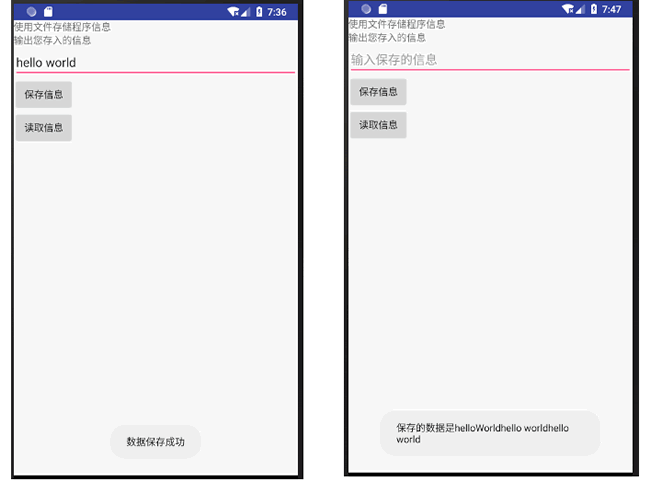

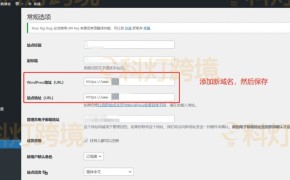
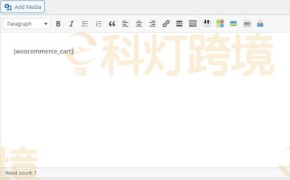
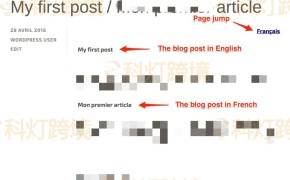
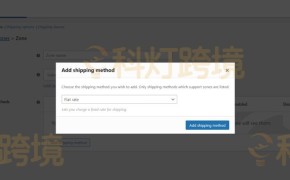
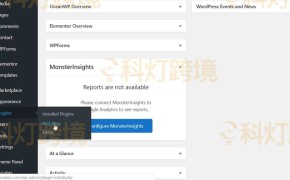










还没有评论呢,快来抢沙发~